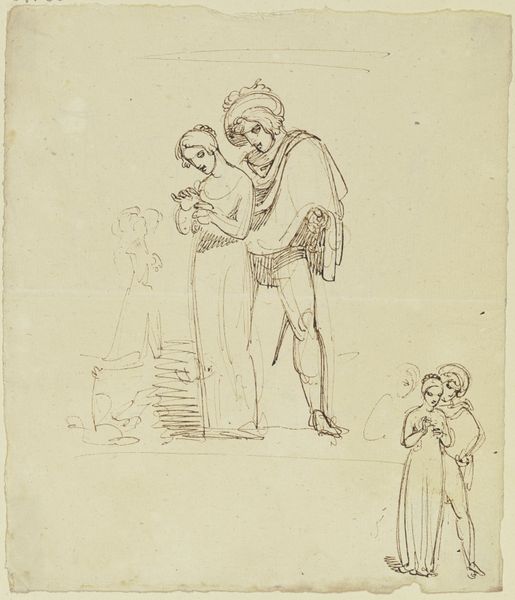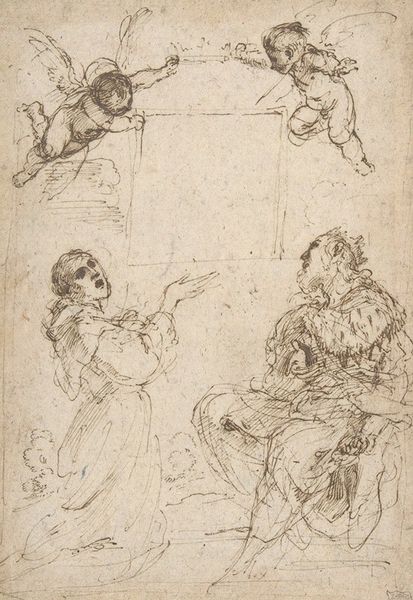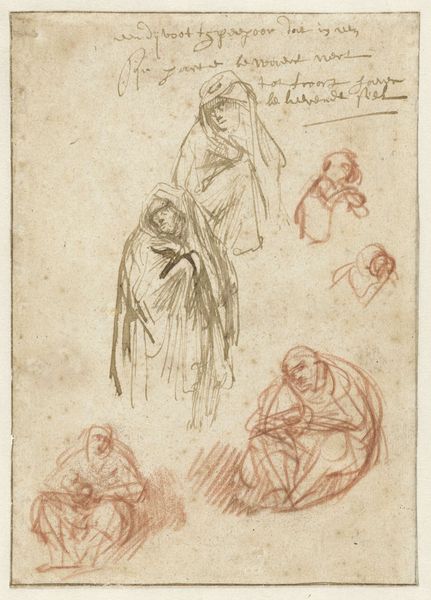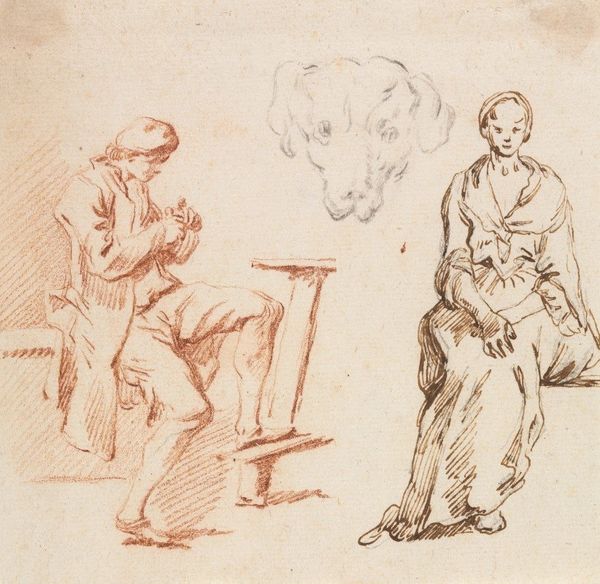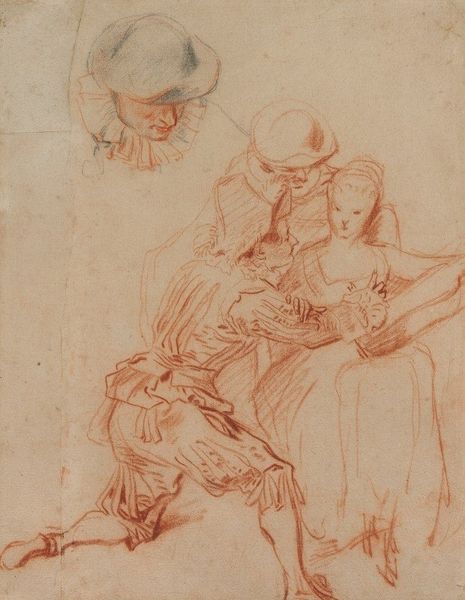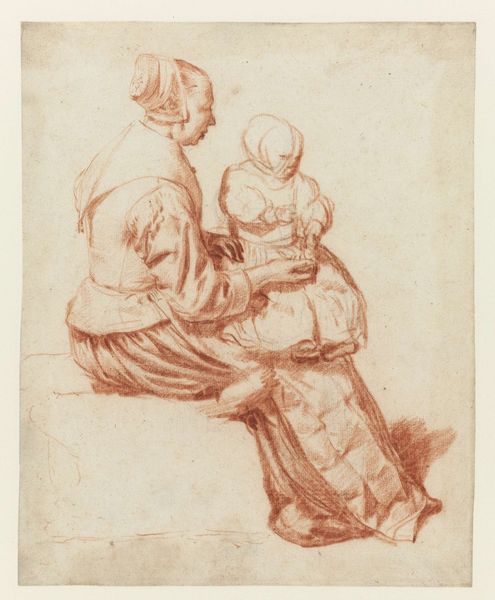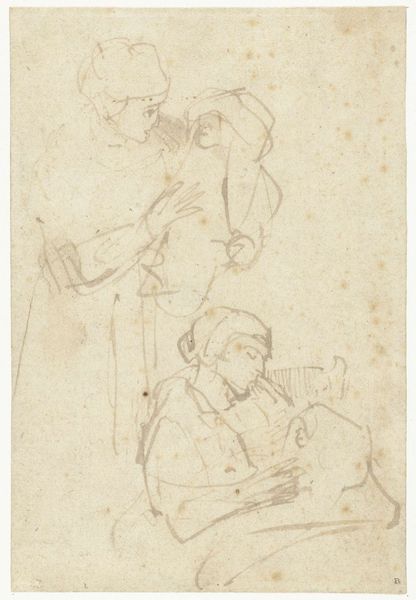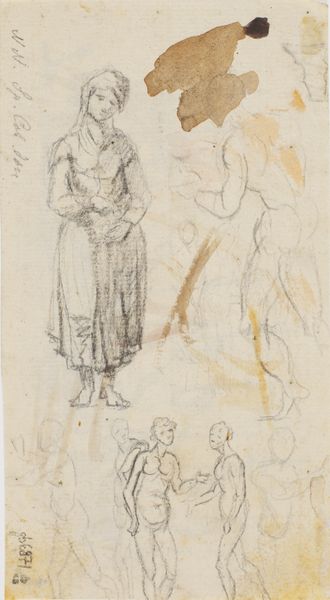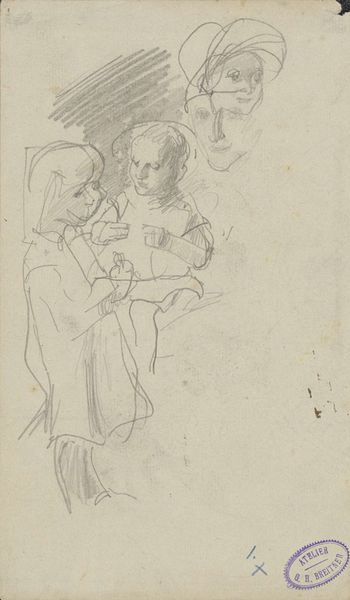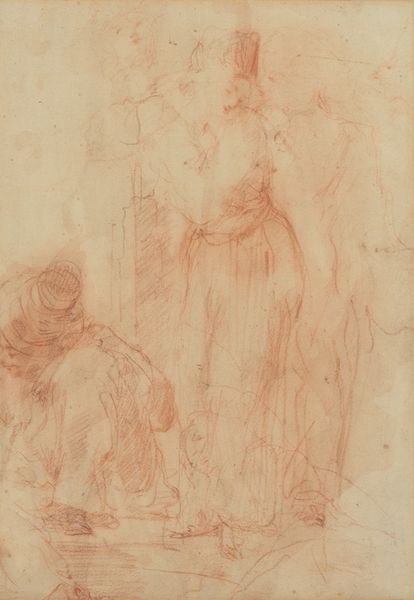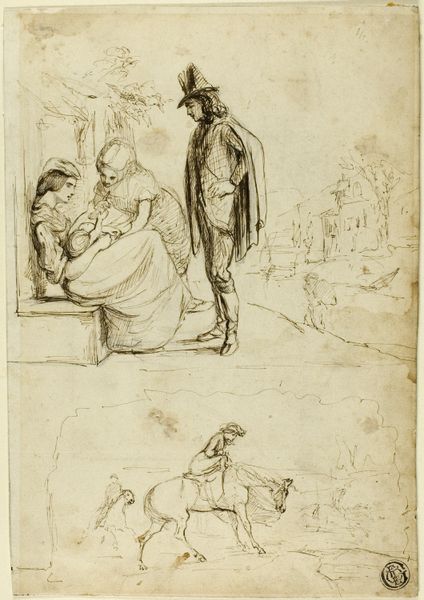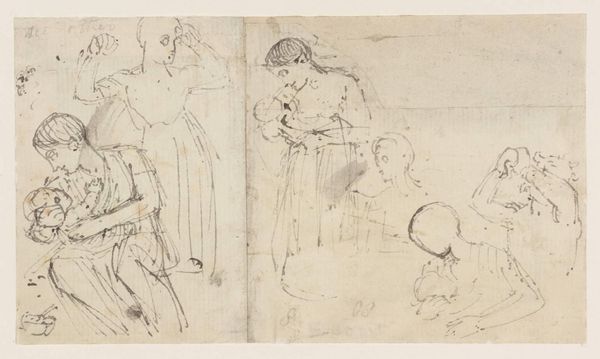
Dimensions: support: 158 x 96 mm
Copyright: CC-BY-NC-ND 4.0 DEED, Photo: Tate
Curator: This captivating drawing, "A Man at a Window; a Child; Another Figure," is attributed to the British School of the 17th century. Executed in sanguine chalk, it presents a cluster of figures. What’s your initial take? Editor: There's a sense of quiet observation, a tableau of figures caught in a moment. The red chalk lends an immediacy to the image. Curator: The man at the window seems to be in a reflective pose, and the children evoke themes of youth and vulnerability. Windows appear frequently in art history, suggesting portals to new perspectives. Editor: It does read like a study of stages of life, doesn't it? The artist seems interested in social types, perhaps sketching from life. How might this image have functioned in 17th-century England? Curator: Likely as part of the artist's process. These studies allowed artists to refine their observation skills, but they are beautiful in their own right. The figures carry archetypal resonance. Editor: It's a reminder that art doesn't always need to be grand to be meaningful. This small work offers a poignant glimpse into a past time. Curator: Precisely. It allows us to connect with the universal themes of life, seen through the eyes of a 17th-century British artist.
